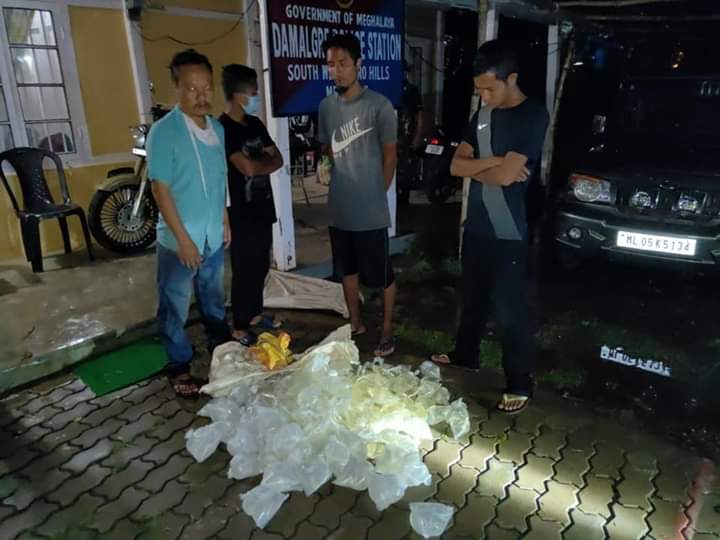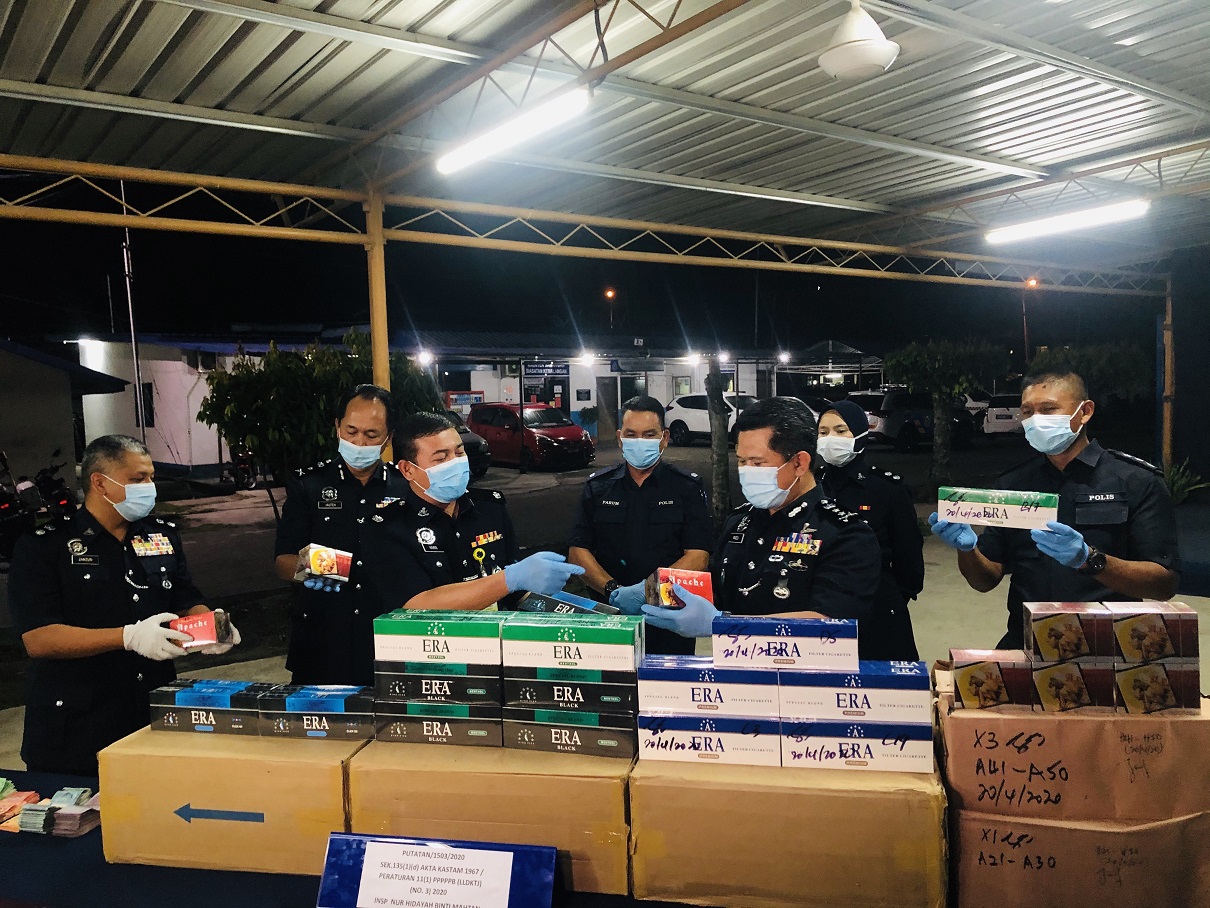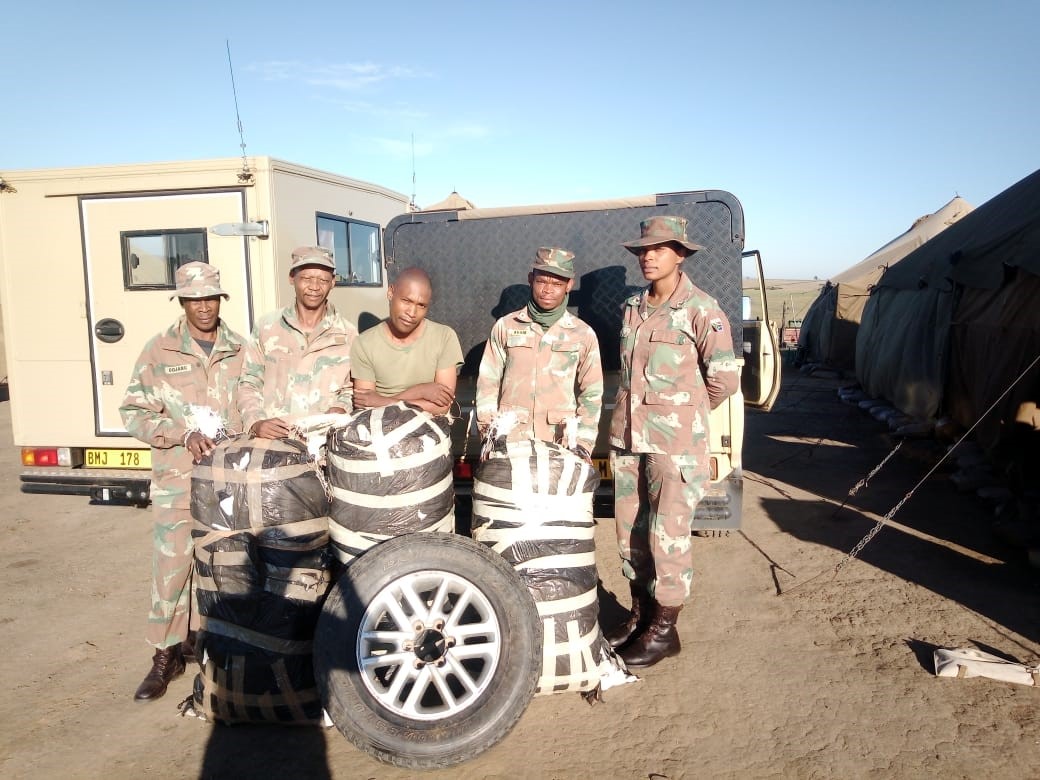
Meghalaya: Government vehicle caught while smuggling illicit liquor during lockdown
In a major embarrassment for the establishment, South West Garo Hills police apprehended a government vehicle while it was illegally ferrying illicit country made liquor on Friday night (April 24).
The vehicle, belonging to the agriculture department in Tura, also had a car pass for the current lockdown making the act even more amplified in terms of impact.
As per information from SWGH police, the vehicle had 4 people travelling within with all of them being later released on a PR bond. Among the detainees, only the driver of the vehicle was an employee of the Agriculture department posted in Tura in West Garo Hills.
The liquor, locally known as ‘poteka’ or local moonshine is made from jaggery and was being ferried in the truck when it was stopped. The vehicle was allegedly being misused by the people involved, who were supplying and selling the drink to people in and around Tura.
Lear More
Webinar on ‘Protecting your Brand on E-Commerce Platforms – Battling the Odds Amid COVID-19 Pandemic’
24/04/2020
The COVID-19 pandemic has heightened the dangers posed by illicit trade. It calls for greater focus on addressing the growing hazards of counterfeiting and smuggling which are severely impacting the economy and endangering lives of consumers. With the current unpredictable situation, along with the commercial predicament, the need for protecting consumers and brand identities have become more important than ever before.
In the present scenario, with the physical brand protection efforts of industry, enforcement officials and government authorities minimized, winning back control of the online space, which could be hijacked by counterfeiters, has become increasingly important. With a view to deliberate on this issue, FICCI CASCADE organized a Webinar on ‘Protecting your Brand on E-Commerce Platforms: Battling the Odds Amid COVID-19 Pandemic’ on April 24, 2020.
The webinar had representatives from Amazon and over 70 industry delegates from India and across the globe participating in the deliberations. The focus was on discussing anti-counterfeiting strategies that would not only protect brands and consumers, but also deter illicit operators taking advantage of the pandemic.
Mr. Arun Chawla, Deputy Secretary General, FICCI, while welcoming the participants said that “E-commerce in India has seen a phenomenal growth over the years. From USD 39 billion in 2017, it is projected to rise to USD 200 billion by 2026. While the e-commerce services will grow, this growth will come with a set of challenges. The coronavirus epidemic has presented fresh challenges for the Indian economy, causing severe disruptive impact on both demand and supply side elements. Given the spike in consumer demand and the corresponding shortage of supplies from legitimate sources, it is imperative that businesses take steps to protect consumers from the proliferation of scammers and infringers that seek to take advantage of the crisis”.
Mr. P C Jha, Advisor, FICCI CASCADE and Former Chairman, Central Board of Indirect Taxes and Customs, in his address, highlighted that “while the sale of counterfeit and smuggled goods in the physical world is rampant and causing enough grief to industry, consumers and government, the size of illicit trade is estimated to be 3.3% of the global trade. The online counterfeiting ecosystem offers distinctive challenges that require a unique online approach”. Mr. Jha also indicated that criminals were seizing on the opportunity by taking advantage of the high demand for products and it was imperative that enforcement authorities were taking preventive initiatives.
The webinar was also addressed by Mr. Amaresh Kumar, Additional Commissioner, GST Policy, who stated that “the measures like the waiver of penalty, late fee and interest on GST will help the industry to tide through this tough phase”. He also invited suggestions from industry members on issues relating to GST and areas that required policy interventions.
Ms. Kaleigh Miller, Global Brand Relations Lead, Amazon, gave an overview of Amazon’s brand protection efforts globally. She informed that over 2.5 million bad-actor accounts have been stopped before they published a single listing on the site, highlighting the many measures taken by Amazon to detect the potential infringements and related remedial actions. She also highlighted Amazon’s sophisticated real time tools, like productive analytics, adaptive machine learning and technology that help review data sources and identify signals, identify inauthentic goods and take immediate action.
An overview of Amazon’s brand protection tools and efforts in India was given by Mr. Sumit Kapoor, Global Brand Relations Manager, Amazon, focusing on their brand registry program which provides powerful search and report tools. “It simplifies cases of potential infringement and provides a simple and guided workflow of submitting a report of infringement. It also helps to build the brand and business with promotional tools and customer analytics”, said Mr. Kapoor.
The concern today was that trade in illicit products, aided by the Covid-19 crisis, was enriching criminal groups and endangering health, while also draining away vital industry and tax revenues. The webinar saw participation of leading industries such as ITC, Hindustan Unilever, Nestle, Britannia, Puma, Johnsons & Johnsons, Dabur, Beiersdorf, Mars, HP, Pernod Richard, Diageo, Underwriters Laboratories, among others including leading law firms. Some key concerns flagged by the representatives from these major players were:
• Need for a mechanism to monitor parallel imports which are not meant for sale in India.
• Tools to monitor counterfeit products sold with non-refundable caveats and consumers from being duped due to low pricing point and higher discounts.
• Availability of automated brand protection tools to remove duplicates/fakes.
• Mechanism to ensure that required regulations are met before sellers put products on the portal.
• Time taken between listing of a merchant and identification of bad actors.
Most participants agreed that brands were struggling in the diminishing market, with cheap counterfeits creating new listings on online marketplaces. They conclusively agreed on the need for a technology-enabled system to help counter illicit operations, besides an effective and strengthened deterrence actions against perpetrators of such criminal activities.
Lear More
Gang involved in smuggling liquor busted
The Jalandhar Police Commissionerate on Thursday busted a gang involved in smuggling illicit liquor in the city amid lockdown. The police arrested three persons and recovered 316 cartons of liquor bottles of various brands.
The Commissioner of Police, Jalandhar, Gurpreet Singh Bhullar, said the police got a tip-off that Rajinder Kumar of Makhdoompura was supplying liquor in the city during the curfew imposed due to Covid-19, for which he had set up a godown at Raj Nagar.
To ensure that no one gets skeptical of this illegal business, Raju kept tenants at the godown, from where the liquor was supplied in a four- wheeler (PB-08 CH 9646).
Bhullar said a team of CIA Staff-1 raided the godown and arrested three suspects, identified as Amit Kumar, alias Ajay, Ankit and Ram Sewak, with 316 cartons of illicit liquor.
The CP further said Amit Kumar was a native of Visholi village in Unnao district of UP; Ankit of Chantpur village in Bihar; and Ram Sewak of Khera village in Unnao district of UP. They were Rajinder’s tenants and were involved in illegally supplying liquor during the lockdown. A case was registered.
https://www.tribuneindia.com/news/jalandhar/gang-involved-in-smuggling-liquor-busted-75196
Lear More
CBP seizes over 2,000 counterfeit KN95 masks from China
CINCINNATI — United States Customs and Border Protection officers in Cincinnati seized 2,000 counterfeit KN95 masks at a Cincinnati shipping hub in early April.
The masks had been shipped from China and destined for Austin, Texas, according to a news release. If they reached their destination uninterrupted, they could have been sold for as much as $7,000.
Officers seized the masks for trademark violation — KN95 masks are specifically manufactured by 3M, a company that makes safety products such as respirators and goggles — but noted that fake masks can also endanger public health during the coronavirus crisis.
“Trade in counterfeit and pirated goods threatens America’s innovation economy, the competitiveness of our businesses, the livelihoods of U.S. workers, and, in some cases, national security and the health and safety of consumers,” CBP spokesman Steven Bansbach said. “Trade in these illegitimate goods is associated with smuggling and other criminal activities, and often funds criminal enterprises.”
https://www.wcpo.com/news/coronavirus/cbp-seizes-over-2-000-counterfeit-kn95-masks-from-china
Lear More
Cigarette smugglers try to bribe cops, violate MCO
PENAMPANG: Two foreign men will face the music for trying to bribe police officers after being caught smuggling 755 cartons of contraband cigarettes.
Sabah Deputy Commissioner of Police Datuk Mazli Mazlan said the incident happened around 3.30pm on April 20 when a police team, carrying out ‘snap check’ operation, stopped the suspects’ Perodua Bezza car along Jalan Ulu Putatan.
He said the police stopped the vehicle for routine inspection during the movement control order (MCO) period and found boxes containing contraband cigarettes.
During questioning, one of the suspects tried to bribe police officers by offering RM7,000 for their release, he added.
However, Mazli said none of the officers were interested in the offer but instead detained both men at the scene, he told a press conference at the Penampang Police Headquarters yesterday.
https://www.theborneopost.com/2020/04/23/cigarette-smugglers-try-to-bribe-cops-violate-mco/
Lear MoreAs prices soar, gold seizures by Customs hits all-time high in Chennai
Spiralling gold prices and a sagging economy may have dampened the spirits of both consumers and jewellers. But, there are a few people making the most out of this situation.
As gold prices skyrocketed during FY20, smuggling activity also touched an all-time high. According to data shared by Chennai Customs, Chennai International Airport seized as much as 375 kg of gold in FY20 as against 271 kg seized in the previous year. The seizure, in value terms, had more than doubled to ₹134 crore in FY20 as compared to ₹87 crore a year ago.
The depreciation of the rupee in relation to the dollar and the US-China trade war crisis made investors find a safe haven in the yellow metal, which led to a price hike. In addition, the high customs duty made the legal import of gold costlier. All of these pushed some people to choose the smuggling path.
Lear More
Smuggling of alcohol, cigarettes on the rise
Lockdown regulations in South Africa have seen an increase in demand for products currently not available, with the national border protection tasking reporting a half a million Rand increase in the value of contraband seized last month compared with March 2019.
Statistics from the Joint Operations Division of the SA National Defence Force (SANDF) show contraband, including cigarettes, other tobacco products and alcohol, conservatively valued at R1,07 million was confiscated by patrolling soldiers on South Africa’s land borders with Botswana, eSwatini, Lesotho, Mozambique and Zimbabwe between 1 and 31 March. This is R472 063 more in Rand terms than the previous March.
At the same time it appears lockdown protocols and regulations, whether in South Africa or its neighbours, has not affected the efforts of dagga smugglers.
https://www.defenceweb.co.za/featured/smuggling-of-alcohol-cigarettes-on-the-rise/
Lear MorePolice arrests Congress leader for smuggling liquor
Police has taken major action in the liquor smuggling case in Mungeli district of Raipur district of Chhattisgarh. On Thursday, April 16, the people who were smuggling the liquor during the lockdown were arrested and arrested. Surprisingly, three policemen and Mungeli Youth Congress district president Rahul Singh have also been accused in this case. Following these allegations, the Congress leader has been suspended from the party for 6 years.
Simultaneously, police constables have also been suspended.
In fact, there were frequent complaints of liquor smuggling in Mungeli district. On Thursday, on the instructions of SP D Shravan, the team of Lormi SDOP Qadir Khan arrested and smuggled illegal smugglers. In which it was revealed that these smugglers were doing nothing but policemen and Congress leaders themselves. Police said that one of the constables has been arrested, the other two constables have escaped, while DGP Awasthi has suspended all three constables.
According to the police, the Mungeli youth Congress district president Rahul Singh along with three police constables was supplying illegal liquor. Blockade was imposed in the forest of Orapani at Khudia Chowki in Lormi area, where smugglers from Madhya Pradesh’s Dindori district used to bring illegal liquor through the jungle, with police seizing 52 liters of English liquor in action.
Lear More
Trio arrested for ‘smuggling’ almost 500,000 cigarettes into SA
Three men have been arrested in northern KwaZulu-Natal after they were caught transporting 20,095 packs of cigarettes from Mozambique on Thursday.
Police spokesperson Capt Nqobile Gwala said an operation was conducted near the Hluhluwe Game Reserve and members stopped three bakkies travelling on the road.
“A search was conducted and 40 boxes, each containing 500 packets of cigarettes, were seized by police. The street value of the recovered cigarettes is estimated at R900,000.”
Gwala said the men, aged between 28 and 54, were arrested.
“A 33-year-old suspect was also charged for being an illegal immigrant. They will appear in court soon facing charges for being in possession of illicit cigarettes.”
“This arrest will send a clear message to others who are contemplating smuggling illicit cigarettes into the province. Operations are in place to combat all forms of criminality in the province,” said the KwaZulu-Natal provincial commissioner, Lieutenant General Khombinkosi Jula.
Lear MoreDuo held for smuggling liquor from Haryana in private ambulance
Two men who were using a private ambulance to allegedly smuggle illicit liquor bottles into Delhi from Haryana were arrested in South West Delhi’s Chhawla and the vehicle seized on Thursday, the police said. A total of 913 smuggled illicit liquor bottles were found from in the ambulance.
The police said that the driver of the ambulance had hired the duo to smuggle the consignment of liquor, in order to make a quick buck. The police are on the lookout for the driver, identified as Jai Singh. The arrested were identified as Harish Lohia, 34, who was driving the vehicle, and Devender,40.
The deputy commissioner of police (Dwarka), Anto Alphonse, said that they were tipped off about the consignment of illicit liquor being transported in a private ambulance bearing Haryana registration number. “Our team laid a trap near the local crematorium. Around 9.30am, the ambulance, a Force jeep, was spotted and stopped. Its driver and another occupant tried to flee but were caught,” Alphonse said.
The police found a cold storage unit in the ambulance filled with liquor bottles and retrieved more bottles from other parts of the vehicle. A total of 25 cartons, containing 913 bottles of illicit liquor, were recovered, he said.
Lear More





